Are you finding small, white, winged insects hanging around your plants? You could be dealing with a whitefly infestation. Here are tips on how to identify them, information about their lifecycle, and five of the common types you may be faced with.
The name whitefly is given to over 1,500 species of soft-bodied, fly-like insects. This species is named after a white powdery wax that covers adult whiteflies. It can be hard to control whiteflies, especially in cases of heavy infestation. These sometimes-invasive pests are an ever-growing concern for growers.
This insect is known for quickly growing populations, transmitting harmful diseases, and infesting wide ranges of crops and greenhouse plants. They are putting increasing pressure on growers.
Damage caused by whiteflies
Whiteflies use their piercing-sucking mouthparts to suck sap from the phloem, food-conducting tissues in plant stems and leaves. Infestations cause leaves to turn yellow, silver, and wilted. Leaves may also have choleric spots and drop prematurely.
Other common signs of a high whitefly population are stem blanching, crop loss, and whole-plant death. This extensive physical damage to crops and plants affects yield. Heavily infested fields or greenhouses often show extensive signs of damage.
Outside of direct plant damage, this pest excretes honeydew, a thick sticky substance, which attracts and grows sooty mold. In severe cases, the sooty mold restricts light from reaching the leaves of plants preventing photosynthesis. This further causes harm to the plant.
Sooty mold is not the only disease associated with whiteflies. Some species are known to spread several conditions that are detrimental to crops. Diseases can be spread by many different species however they are most commonly transmitted by whitefly species in the genus Bemisia. Members of this genus of whitefly are known to transmit yellow mosaic diseases in over 20 common plant species.
Begomovirus is another common disease carried by this sucking insect. Begomovirus is characterized by leaf curling, vein yellowing, and stunting of plant growth. These diseases are a large concern for growers as they cause large amounts of plant loss and unmarketable yield.
Getting rid of whiteflies is a common concern for growers.
Five common whitefly species
There are many types of whiteflies, and some types are more prevalent than others. A few common types that both indoor plant and crop growers face are listed below.
Greenhouse Whitefly
Trialeurodes vaporariorum
Identification:
Adults have white wings and a yellow body surface. Look for a triangular overall shape when the whitefly is at rest and its wings are flat against its body.
Characteristics:
Cannot survive in colder temperatures outside of greenhouses.
Host plants:
Most commonly found in greenhouses and indoor environments. A broad range of over 250 vegetables and ornamentals including cucurbits, leafy greens, geranium, aster, tomatoes, gardenias, poinsettias, and hibiscus.
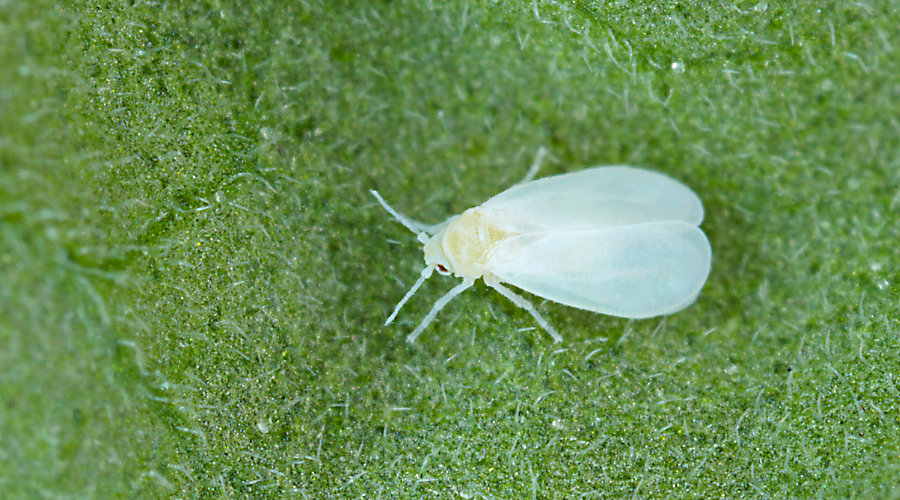
Silverleaf Whitefly or Sweet Potato Whitefly
Bemisia tabaci
Identification:
Yellow body with white wings that are held somewhat vertically tilted creating a ‘tent’ shape.
Characteristics:
Nymphs have a distinctive Y-shape on their backs.
Host plants:
Most commonly found in warmer southern states on outdoor crops and in warm/humid greenhouses. Many woody and herbaceous plants and crops including sweet potatoes, tomatoes, peppers, cotton, cucurbits, roses, and poinsettias.
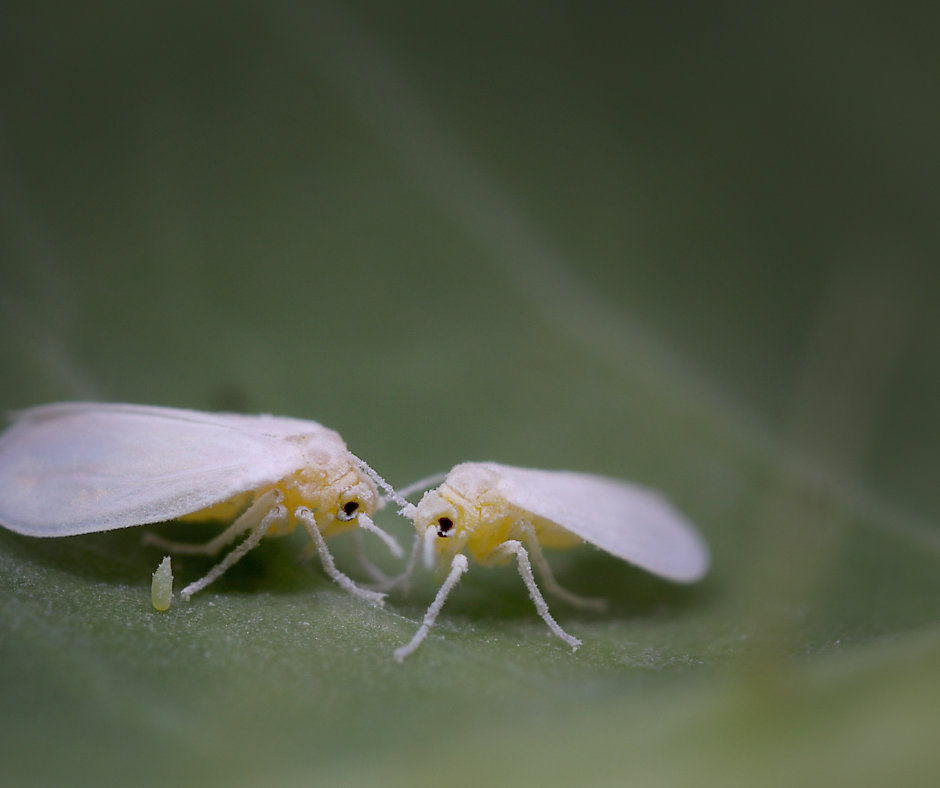
Banded Winged Whitefly
Trialeurodes abutilonea
Identification:
Two distinct gray zigzag lines on the wings.
Characteristics:
In southern states, they can survive outdoors in the winter.
Host plants:
Tends to prefer ornamental plants common host plants include cotton, hibiscus, poinsettia, geranium, petunia, fuchsia, citrus and eucalyptus.
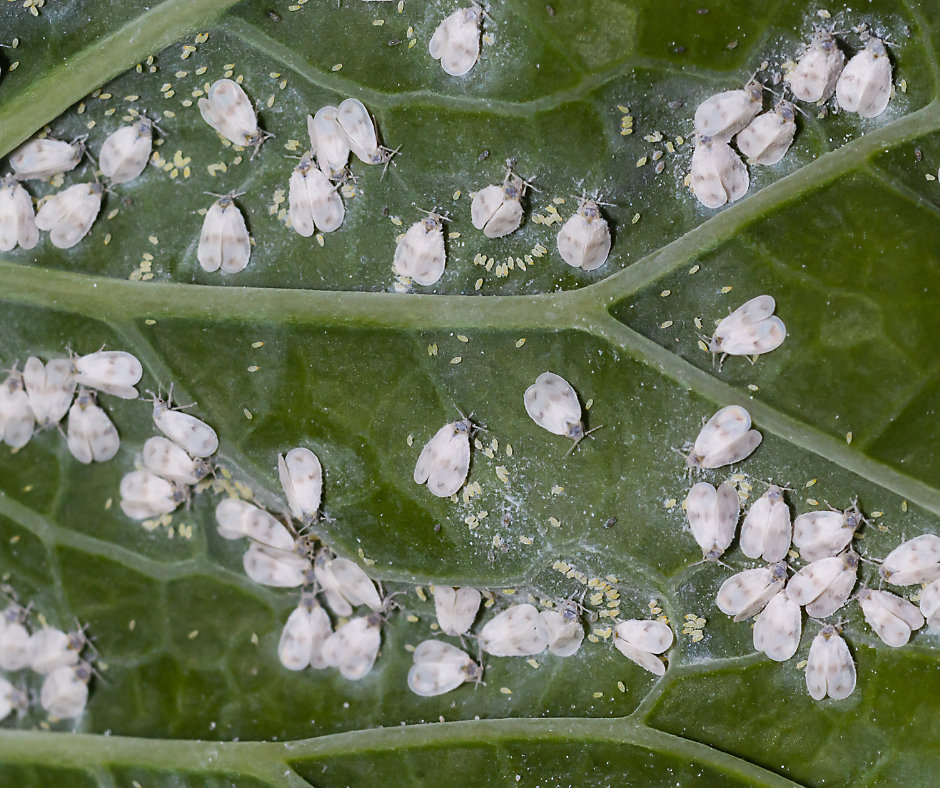
Giant Whitefly
Aleurodicus dugesii
Identification:
Yellow bodied. Wings are white with light grey/brown irregularly shaped markings.
Characteristics:
Larger size than other whiteflies. Up to 3/16 of an inch long.
Host plants:
They have a preferred host of hibiscus in the US but can commonly be found on other ornamentals and fruit trees including avocado, banana, and citrus.
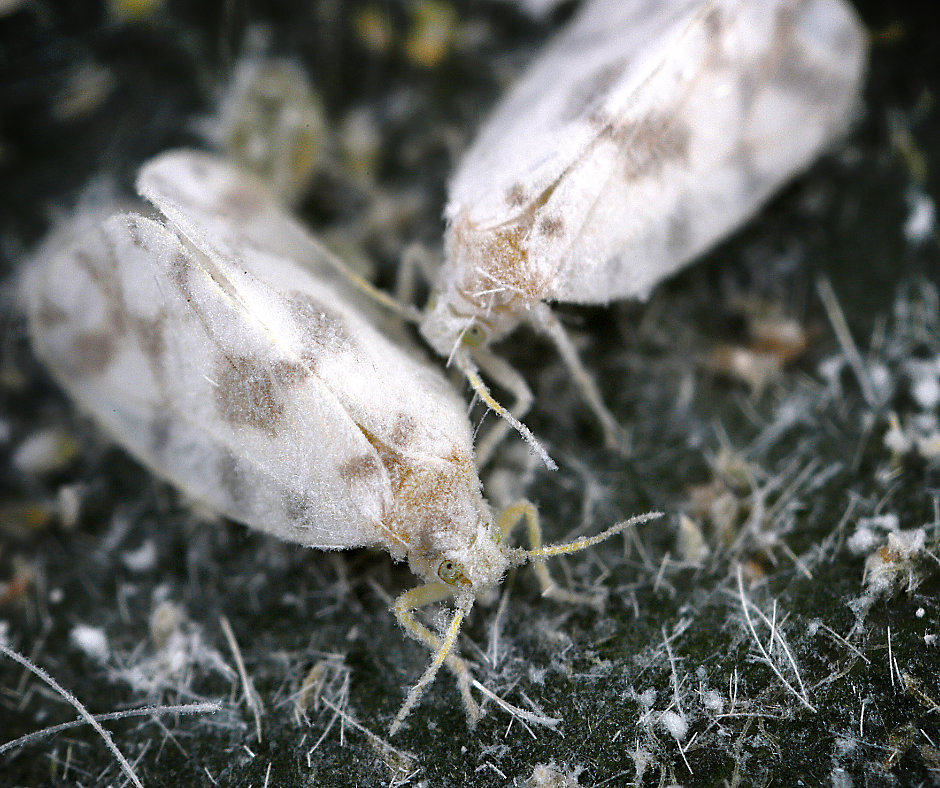
Citrus Whitefly
Dialeurodes citri
Identification:
The body is white and has completely white wings.
Characteristics:
Favor warm climates and can thrive even on leaves with a flat waxy surface.
Host plants:
All citrus trees, coffee, English ivy, lilac, cherry trees, and a wide range of ornamentals and vegetables.
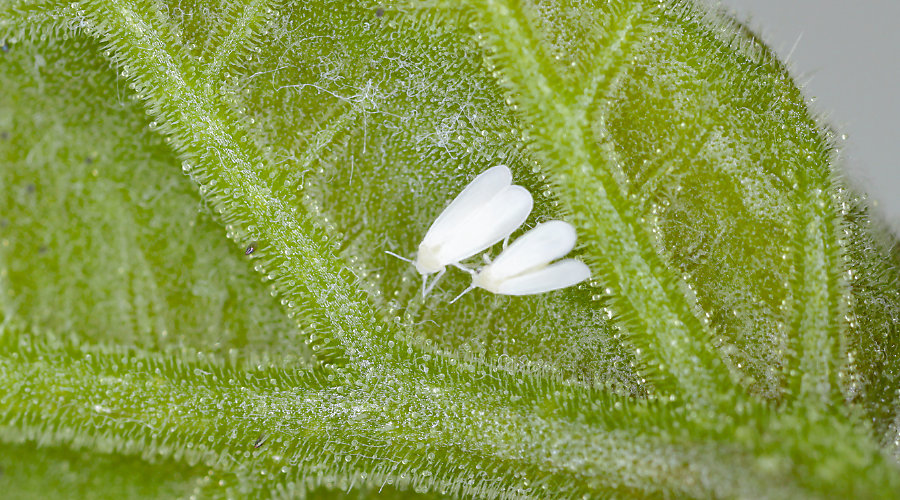
The life cycle of a whitefly
Whiteflies are similar looking to flies or moths however, they are related to aphids, scales, and mealybugs. These are all common pest challenges for growers and come from the order Hemiptera.
Depending on the type of whitefly, variations exist in the color of the powdery wax that gives them their name. These variations range from light transparent yellow to black with white fringes.
Female whitefly can lay 6-20 eggs per day. They prefer to lay the eggs on the underside of leaves on the host plants. Eggs typically start white or yellow in color but then turn brown as they begin to mature. The young will go through four nymphal stages all while feeding on the infested plants.
Seven to 10 days after the eggs are laid, they hatch, and scale-like crawlers appear. These crawlers then settle in to pass the next two instars. While the pupa stage is absent from the metamorphosis of whiteflies, the final instar is often referred to as a pupa. Both nymphs and adults feed on plant juices from the leaves.
Whiteflies are especially fond of higher temperatures because it speeds up their development. At 82⁰ F, they can reach full development in as little as 18 days. This means there are multiple lifecycles per year. In warmer climates, these insects can cause infestations year-round.
How to identify a whitefly infestation
This group of insects favor newer growth and the undersides of leaves for egg laying. Check under leaves, especially around the veins of the plant for small yellow or brown eggs. The immatures, commonly referred to as nymphs, will look like tiny white ovals, and do not move around much after the eggs hatch. Both the eggs and nymphs can be found on the undersides of the leaves.
These insects tend to aggregate in large numbers and infestations will be easy to find. Females can lay 100 – 400 eggs in their lifetime. Their numbers can grow rapidly which is why preventative measures should be used to keep these infestations from growing.
Adult whitefly tend to be attracted to yellow and white surfaces. Yellow and white sticky traps are commonly used to monitor the pest populations. Chemical applications, both conventional and organic, can be used to keep the populations low in the field and in greenhouses. Consistent and repeated use of the same chemical can increase the likelihood of the insect developing resistance to pesticides.
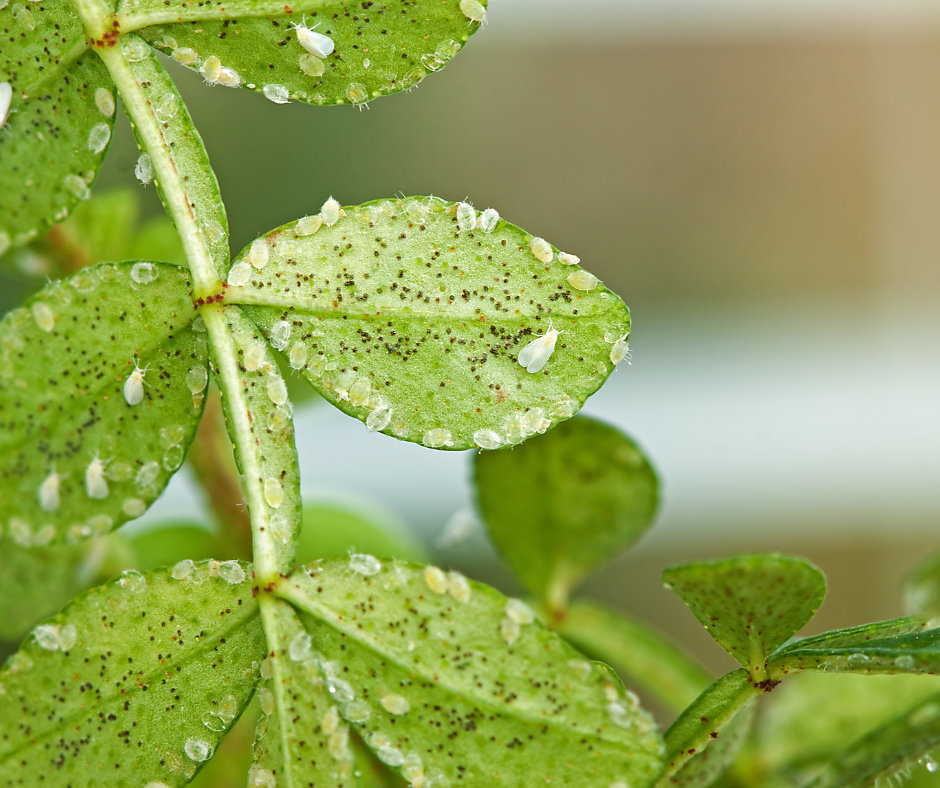
Kemin Crop Technologies offers botanical oil-based pesticides. Conquer the threat of whiteflies and other pests with our crop protection products.
Subscribe to our blog
Sources
The Wisconsin Horticulture Division of Extension, University of California Agriculture and Natural Resources Statewide Integrated Pest Management Program, Colorado State University Extension, North Carolina State Extension, and American Phytopathological Society (APS) Publications were used as sources within this article.

